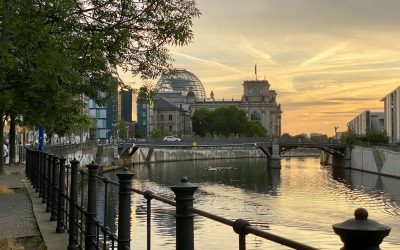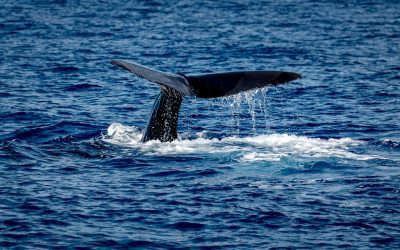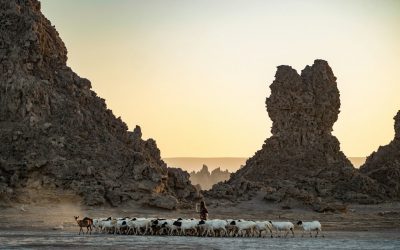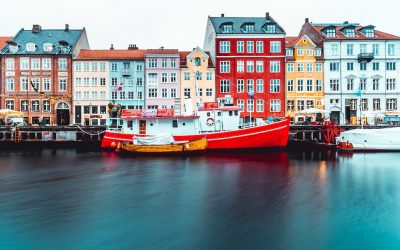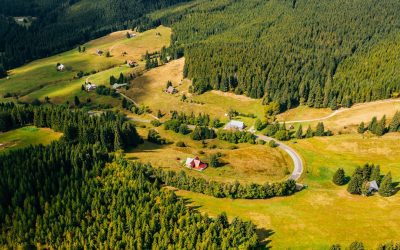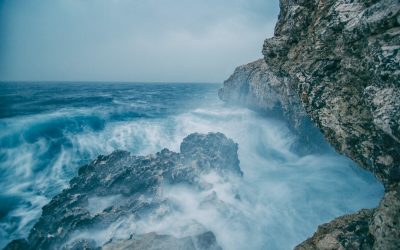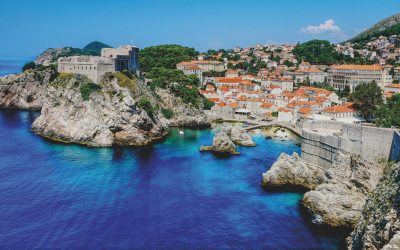World Geography
Geography is the study of the Earth’s landscapes, environments, and the relationships between people and their surroundings. It encompasses both the physical aspects of the Earth, such as its landforms, bodies of water, and climate, as well as the human aspects, including population distribution, cultures, and economies. World geography is a broad field that seeks to understand the complexities of our planet and how humans interact with it. By studying world geography, we can gain a deeper appreciation for the diversity of our planet and the interconnectedness of its various regions.
Geography is a multidisciplinary field that draws on elements of physical science, social science, and humanities. It involves the use of maps, spatial analysis, and geographic information systems (GIS) to understand the Earth’s surface and the processes that shape it. World geography also encompasses the study of human geography, which examines the ways in which people and their activities are distributed across the Earth. By understanding world geography, we can better appreciate the environmental, cultural, and economic challenges facing different regions of the world. This knowledge is crucial for addressing global issues such as climate change, resource management, and international development.
The Five Oceans and Seven Continents
The Earth’s surface is divided into five major oceans: the Pacific, Atlantic, Indian, Southern (or Antarctic), and Arctic Oceans. These vast bodies of water play a crucial role in regulating the Earth’s climate and supporting diverse marine ecosystems. The oceans also serve as important transportation routes and a source of food and other natural resources for human societies around the world.
In addition to the oceans, the Earth’s landmasses are divided into seven continents: Africa, Antarctica, Asia, Europe, North America, Australia (or Oceania), and South America. Each continent has its own unique physical and cultural characteristics, shaped by millions of years of geological processes and human history. From the deserts of Africa to the rainforests of South America, the continents offer a rich tapestry of landscapes and environments for exploration and study.
Major Mountain Ranges and Deserts
The Earth’s surface is also marked by major mountain ranges and deserts that have shaped the planet’s physical and cultural landscapes. The Himalayas, for example, are the highest mountain range in the world and are home to diverse ecosystems and cultures in countries such as India, Nepal, and Bhutan. The Andes in South America, the Rockies in North America, and the Alps in Europe are other prominent mountain ranges that have influenced human settlement patterns and economic activities.
Deserts cover about one-third of the Earth’s land surface and are characterized by low precipitation and extreme temperatures. The Sahara Desert in Africa is the largest hot desert in the world, while the Gobi Desert in Asia is one of the largest cold deserts. Deserts are not only home to unique flora and fauna but have also been important trade routes and cultural crossroads throughout history.
Climate Zones and Biomes
The Earth’s climate is influenced by a variety of factors, including latitude, altitude, ocean currents, and prevailing winds. As a result, the planet is divided into different climate zones, each with its own characteristic weather patterns and ecosystems. The equator, for example, experiences a tropical climate with high temperatures and heavy rainfall, while the polar regions have a cold and dry climate.
These climate zones give rise to different biomes, or large ecological areas characterized by distinct plant and animal communities. The tropical rainforest biome, found near the equator, is home to a diverse array of species and is vital for regulating the Earth’s climate. The grasslands biome, found in regions such as the African savannah and North American prairies, supports grazing animals and has been important for human agriculture throughout history.
Human Geography and Population Distribution
Human geography examines the ways in which people and their activities are distributed across the Earth’s surface. It encompasses topics such as population growth, migration patterns, urbanization, and cultural diversity. Understanding human geography is crucial for addressing global challenges such as poverty, inequality, and environmental degradation.
Population distribution is uneven across the world, with some regions experiencing rapid population growth while others are declining. The majority of the world’s population lives in Asia, particularly in countries such as China and India. Urban areas are also growing rapidly, with more than half of the world’s population now living in cities. This trend has significant implications for infrastructure development, resource management, and social inequality.
Historical and Cultural Geography
Historical geography examines how human activities have shaped the Earth’s landscapes over time. It explores topics such as colonialism, trade routes, and the rise and fall of empires. Cultural geography focuses on how human cultures have developed in different regions of the world and how they interact with their environments.
The Silk Road, for example, was an ancient trade route that connected China with Europe and facilitated the exchange of goods, ideas, and technologies across Eurasia. This historical trade route had a profound impact on the development of cultures and economies along its path. Similarly, cultural geographers study how different societies have adapted to their environments through practices such as agriculture, architecture, and religious beliefs.
The Importance of Geographic Knowledge
Geographic knowledge is crucial for addressing global challenges such as climate change, resource management, and international development. By understanding world geography, we can better appreciate the environmental, cultural, and economic challenges facing different regions of the world. This knowledge is crucial for addressing global issues such as climate change, resource management, and international development.
Geographic knowledge also helps us to understand our interconnectedness with other regions of the world. By studying world geography, we can gain a deeper appreciation for the diversity of our planet and the interconnectedness of its various regions. This understanding can foster a sense of global citizenship and empathy for people from different cultures and backgrounds.
In conclusion, world geography is a complex and multifaceted field that encompasses both physical and human aspects of the Earth’s landscapes. By studying world geography, we can gain a deeper appreciation for the diversity of our planet and the interconnectedness of its various regions. This knowledge is crucial for addressing global challenges such as climate change, resource management, and international development. It also helps us to understand our interconnectedness with other regions of the world and fosters a sense of global citizenship.
FAQs
What is world geography?
World geography is the study of the Earth’s landscapes, environments, and the relationships between people and their environments. It encompasses the physical features of the Earth, as well as the human activity that takes place on it.
Why is world geography important?
World geography is important because it helps us understand the world around us. It provides insights into the physical and human processes that shape our planet, and helps us make informed decisions about how to interact with our environment.
What are the main branches of world geography?
The main branches of world geography include physical geography, which focuses on the Earth’s natural features and processes, and human geography, which examines the relationships between people and their environments.
How does world geography impact our daily lives?
World geography impacts our daily lives in numerous ways, from influencing the weather and climate we experience, to shaping the availability of natural resources and influencing the distribution of populations and cultures around the world.
What are some key concepts in world geography?
Key concepts in world geography include location, place, human-environment interaction, movement, and region. These concepts help geographers understand and interpret the world around them.
Brexit and Beyond: The Future of the European Union
Brexit, short for “British exit,” refers to the United Kingdom’s decision to leave the European Union. This historic event, which took place on June 23, 2016, has had far-reaching implications for both the UK and the EU. Understanding Brexit and its impact on the EU is crucial for anyone interested in European politics and economics. The European Union is a political and economic union of 27 member states located primarily in Europe. It was established with the aim of promoting peace, stability, and economic prosperity in the region. The EU has evolved over time, expanding its membership and deepening its integration through various treaties and agreements. Summary Brexit has significant implications for the EU, including challenges and opportunities. The history of the EU dates back to its origins and has evolved over time. The future of the EU involves a vision for a united Europe and the role of member states in shaping it. Economic integration is crucial for the success of the EU, but challenges such as migration and security must also be addressed. The EU has a role in promoting democracy, human rights, and tackling climate change and environmental issues. The History of the European Union: From its Origins to Today The European Union has its roots in the aftermath of World War The devastation caused by the war led European leaders to seek ways to prevent future conflicts and promote cooperation among nations. The first step towards European integration was taken with the creation of the European Coal and Steel Community (ECSC) in 1951. Over the years, the EU has grown in size and scope. The...
Remembering King Hussein Bin Talal of Jordan: A Legacy of Leadership and Humanity
Introduction King Hussein Bin Talal of Jordan, a revered statesman and a symbol of unity, passed away on February 7, 1999. His demise marked the end of an era and left a profound impact on both the people of Jordan and the international community. This article aims to honor his memory and highlight the incredible legacy he left behind. King Hussein Bin Talal of Jordan: A Remarkable Journey King Hussein Bin Talal’s remarkable journey began on November 14, 1935, when he was born in Amman, Jordan. Crowned as the king at the tender age of 17, he ruled the Hashemite Kingdom of Jordan for an unprecedented 46 years until his passing. Passionate Leadership and Political Influence As a leader, King Hussein possessed an unparalleled passion for his country and its people. He dedicated his life to safeguarding Jordan’s sovereignty, promoting regional stability, and advocating for peace in the Middle East. Under his reign, Jordan experienced significant political stability and economic growth, becoming an influential voice in regional affairs. A Bridgebuilder and Peacemaker King Hussein played a pivotal role in mediating conflicts and fostering dialogue between nations. His commitment to peaceful coexistence led to the signing of the historic peace treaty with Israel in 1994, which transformed the region’s geopolitical landscape. His efforts in nurturing diplomatic ties have earned him immense respect and acclaim worldwide. A Beacon of Humanity Beyond his political achievements, King Hussein stood as a beacon of humanity. He championed numerous causes, including education, healthcare, and the empowerment of women. His charitable initiatives, such as the establishment of the King Hussein Cancer Foundation, continue to positively impact...
Discovering the Hidden Gems of Dominica: A British Explorer’s Journey
Nestled in the eastern Caribbean, the island of Dominica is a hidden gem waiting to be discovered. Known as the “Nature Isle of the Caribbean,” Dominica boasts an unspoiled beauty that sets it apart from other tourist destinations in the region. With its lush rainforests, pristine beaches, and diverse wildlife, Dominica is a must-visit destination for nature lovers and adventure seekers alike. Dominica is located between the French islands of Guadeloupe and Martinique. Its unique geographical position has shaped its landscape, making it a haven for natural wonders. The island is volcanic in origin, resulting in dramatic peaks, deep valleys, and hot springs. This volcanic activity has also given rise to some of Dominica’s most famous attractions, such as the Boiling Lake and Trafalgar Falls. Summary Dominica boasts unspoiled natural beauty and cultural heritage worth exploring. Natural wonders like Boiling Lake and Trafalgar Falls are must-see attractions. Meeting the Kalinago people offers a unique cultural experience. Hiking trails like Morne Trois Pitons and Segment 11 offer stunning views. Champagne Beach and Victoria Falls are among the top beaches and waterfalls to visit. The Natural Wonders of Dominica: From Boiling Lake to Trafalgar Falls Dominica’s volcanic landscape has created a playground for nature enthusiasts. One of the island’s most iconic attractions is the Boiling Lake, located in Morne Trois Pitons National Park. This natural wonder is the second-largest boiling lake in the world and is surrounded by steam vents and hot springs. Hiking to the Boiling Lake is a challenging but rewarding experience, offering breathtaking views along the way. Another popular natural attraction in Dominica is Trafalgar Falls. Located near...
Discovering the Hidden Gems of Djibouti: A British Traveller’s Guide
Djibouti, located in the Horn of Africa, is a small country that often gets overlooked by travellers. However, this hidden gem is worth exploring for its unique blend of history, culture, and natural beauty. Djibouti has a rich history, with influences from Arab, African, and French cultures. The country’s strategic location on the Red Sea has made it a hub for trade and commerce throughout history. One of the main reasons why Djibouti is a fascinating destination is its diverse landscapes. From stunning beaches to rugged mountains and volcanic formations, Djibouti offers a range of outdoor activities for adventure enthusiasts. The country is also home to several wildlife reserves, where visitors can spot rare species such as the Somali ostrich and the Grevy’s zebra. Summary Djibouti is a hidden gem worth exploring for its unique landscapes and cultural experiences. The best time to visit Djibouti is during the cooler months of November to February. Transportation options to Djibouti include flights and ferries, with visa requirements varying by nationality. Top attractions in Djibouti include the stunning beaches of the Gulf of Tadjoura and the otherworldly landscapes of Lake Assal and Ardoukoba volcano. Cultural experiences in Djibouti include meeting the friendly locals and learning about their traditions, such as the nomadic lifestyle of the Afar people. The Best Time to Visit Djibouti: Seasonal Considerations Djibouti has a hot desert climate, with high temperatures throughout the year. The best time to visit Djibouti is during the cooler months of November to February when temperatures are more bearable for outdoor activities. This is also the peak tourist season, so it’s advisable to book...
Discovering Denmark: A Journey Through the Charming Land of Vikings and Hygge
Denmark, located in Northern Europe, is a country known for its rich history and vibrant culture. With a population of approximately 5.8 million people, Denmark is a small but significant country. The country is made up of the Jutland Peninsula and numerous islands, including Zealand, where the capital city of Copenhagen is located. Denmark has a fascinating history that dates back thousands of years. It was once home to the Vikings, a seafaring people who played a significant role in European history. Today, Denmark is known for its modern and progressive society, but it still retains its historical charm. The Danish culture is deeply rooted in traditions and customs that have been passed down through generations. The Danish people are known for their friendliness, hospitality, and love for nature. They take pride in their heritage and are eager to share it with visitors. Summary Denmark is a country with a rich history and culture. The Viking heritage of Denmark is worth exploring. Hygge, the Danish concept of coziness and comfort, is a must-experience. Denmark boasts beautiful landscapes and hidden gems in its capital city, Copenhagen. Danish cuisine, art and design, royal legacy, sustainable lifestyle, and festivals are all worth discovering. Exploring the Viking Heritage of Denmark Denmark has a rich Viking heritage that can be traced back to the 8th century. The Viking Age in Denmark was a time of exploration, trade, and conquest. The Vikings were skilled seafarers who traveled far and wide, leaving their mark on the lands they encountered. Visitors to Denmark can explore this Viking heritage by visiting museums and historical sites dedicated to the...
Exploring the Hidden Gems of the Czech Republic: A Journey Through Bohemia and Beyond
The Czech Republic is a country that is often overlooked as a travel destination, overshadowed by its more popular neighbors such as Germany and Austria. However, this Central European gem has so much to offer to the intrepid traveler. From its stunning architecture and rich history to its picturesque countryside and delicious cuisine, the Czech Republic is a destination that should not be missed. When most people think of the Czech Republic, they immediately think of Prague, the country’s capital and most popular tourist destination. While Prague is undoubtedly a must-visit city with its beautiful Old Town Square, Prague Castle, and Charles Bridge, there is so much more to explore beyond the capital. The country is dotted with charming towns and villages, enchanting castles and chateaus, and breathtaking natural landscapes. In this article, we will uncover the lesser-known treasures of the Czech Republic and take you on a journey through its hidden gems. Summary The Czech Republic is home to many hidden treasures waiting to be discovered. Bohemia is a must-visit destination for those seeking a journey through time and hidden gems. The countryside is dotted with enchanting castles and chateaus that are worth exploring. Quaint towns and villages offer a glimpse into the rich history and culture of the Czech Republic. The natural wonders of the country, from forests to mountains, are breathtaking and not to be missed. Uncovering the Lesser-Known Treasures of the Czech Republic While popular tourist attractions are undoubtedly worth visiting, there is something special about discovering lesser-known destinations. These hidden gems often offer a more authentic experience, away from the crowds of tourists. They...
Discovering the Hidden Gems of Cyprus: A Traveller’s Guide
Title: The Impact of Artificial Intelligence on the Healthcare Industry Introduction: Artificial Intelligence (AI) has revolutionized various industries, and the healthcare sector is no exception. With its ability to analyze vast amounts of data, identify patterns, and make predictions, AI has the potential to transform healthcare delivery, improve patient outcomes, and enhance overall efficiency. This article explores the impact of AI on the healthcare industry, focusing on three key areas: diagnosis and treatment, patient care, and administrative tasks. Summary Cyprus is the perfect destination for travellers seeking sun, culture, and adventure. Top historical and cultural sites to visit in Cyprus include the Tombs of the Kings and the ancient city of Kourion. Cyprus boasts some of the best beaches in the Mediterranean, including Nissi Beach and Fig Tree Bay. Hiking and nature trails in Cyprus offer stunning views of the island’s mountains, forests, and waterfalls. Foodies will love trying traditional Cypriot dishes like halloumi cheese, souvlaki, and loukoumades. AI has the potential to significantly improve the accuracy and speed of medical diagnosis. By analyzing patient data, including medical records, lab results, and imaging scans, AI algorithms can identify patterns and detect abnormalities that may be missed by human doctors. This can lead to earlier detection of diseases such as cancer, enabling timely intervention and improved patient outcomes. Furthermore, AI-powered systems can assist doctors in developing personalized treatment plans. By analyzing large datasets of patient information and clinical trials, AI algorithms can provide evidence-based recommendations for treatment options. This can help doctors make more informed decisions and tailor treatments to individual patients’ needs. Additionally, AI can enhance surgical procedures by...
Discovering the Vibrant Culture and Colourful History of Cuba: A Journey Through the Pearl of the Caribbean
Cuba, a vibrant and captivating country located in the Caribbean, is known for its rich culture and history. From its colonial past to the Cuban Revolution, the country has a fascinating story to tell. Cuba is also famous for its music, art, cuisine, and natural wonders. With its pristine beaches, lush rainforests, and stunning architecture, it is no wonder that Cuba has become a popular travel destination. In this article, we will explore the various aspects of Cuba’s culture and history that make it such a unique and enticing place to visit. Summary Cuba boasts a vibrant culture and colourful history, making it a must-visit destination. From colonial times to the revolution, Cuba’s rich history is fascinating and worth exploring. The people of Cuba are diverse and resilient, adding to the country’s unique character. Art, music, and cuisine in Cuba are a celebration of creativity, passion, and fusion of influences. Cuba’s natural wonders, stunning architecture, and love for life make it a truly unforgettable experience. Exploring Cuba’s Rich History Cuba’s history is deeply intertwined with its colonial past. The island was first colonized by the Spanish in the 15th century and remained under Spanish rule until the late 19th century. This colonial period left a lasting impact on Cuba’s architecture, language, and culture. Visitors to Cuba can explore the historic city of Havana, with its well-preserved colonial buildings and cobblestone streets. Other notable historical landmarks include the Castillo de la Real Fuerza, a fortress built in the 16th century to protect Havana from pirate attacks, and the Plaza de la Catedral, home to the stunning Havana Cathedral. The Cuban...
Discovering the Charm of Croatia: A Journey through its Stunning Landscapes and Rich Culture
Croatia, located in Southeast Europe, is a country known for its stunning natural beauty, rich history, and vibrant culture. With a diverse landscape that includes a breathtaking coastline along the Adriatic Sea, picturesque islands, lush national parks, and charming towns and cities, Croatia offers something for every type of traveler. The history of Croatia dates back thousands of years, with influences from various civilizations including the Romans, Byzantines, Venetians, and Austro-Hungarians. This rich history is evident in the country’s architecture, traditions, and cultural heritage. Summary Croatia is a land of beauty and culture, with a rich history and warm hospitality. The Adriatic coastline is a must-see, with dazzling beaches and islands to explore. Plitvice Lakes National Park is a natural wonder, with enchanting waterfalls and lakes. Dubrovnik is a magnificent city, a UNESCO World Heritage Site with stunning architecture. Split is a blend of ancient and modern culture, with a historic city center and vibrant nightlife. The Dazzling Adriatic Coastline: Exploring Croatia’s Beaches and Islands One of the main attractions of Croatia is its stunning coastline along the Adriatic Sea. Stretching over 1,100 miles, the coastline is dotted with beautiful beaches, crystal-clear waters, and charming coastal towns. Some of the most popular beaches in Croatia include Zlatni Rat in Bol, which is known for its unique shape and turquoise waters; Stiniva Beach on the island of Vis, which is hidden between towering cliffs; and Punta Rata Beach in Brela, which has been voted one of the most beautiful beaches in Europe. In addition to the beaches, Croatia is also home to over a thousand islands. The most famous among...
Discovering the Natural Wonders of Costa Rica: A Journey Through the Rainforests and Beaches
Costa Rica, located in Central America, is often referred to as a natural paradise due to its stunning landscapes and rich biodiversity. This small country is home to a wide variety of ecosystems, including rainforests, cloud forests, beaches, and volcanoes. Costa Rica has become a popular destination for eco-tourism, attracting visitors from around the world who are eager to explore its natural wonders. Summary Costa Rica is a natural paradise with lush rainforests, national parks, cloud forests, pristine beaches, and natural hot springs. Exploring the rainforests and national parks allows visitors to discover the incredible biodiversity of Costa Rica. Trekking through the cloud forests of Monteverde offers a unique and unforgettable experience. Wildlife watching in Costa Rica’s natural habitats is a must-do activity for nature lovers. Costa Rica’s sustainable tourism practices ensure that the natural wonders are preserved for future generations. Exploring the Lush Rainforests of Costa Rica Costa Rica’s rainforests are some of the most biodiverse ecosystems on the planet. These lush forests are teeming with life, from vibrant tropical plants to exotic animals. The rainforests play a crucial role in maintaining the balance of the Earth’s climate and are often referred to as the “lungs of the planet.” There are several popular rainforest destinations in Costa Rica that offer visitors the opportunity to immerse themselves in this natural wonderland. One such destination is Tortuguero National Park, located on the Caribbean coast. This park is known for its extensive network of canals, which can be explored by boat or kayak. Visitors can spot a wide variety of wildlife here, including monkeys, sloths, and colorful birds. Another popular rainforest...
Exploring the Vibrant Culture and Natural Wonders of Congo-Brazzaville
Congo-Brazzaville, officially known as the Republic of the Congo, is a country located in Central Africa. It is often overshadowed by its larger neighbor, the Democratic Republic of the Congo, but it has its own unique charm and beauty. With a rich culture and stunning natural landscapes, Congo-Brazzaville is a hidden gem waiting to be discovered. The country is known for its vibrant music and dance, as well as its diverse wildlife and lush rainforests. From the bustling streets of the capital city, Brazzaville, to the tranquil beaches along the Atlantic coast, Congo-Brazzaville offers a wide range of experiences for visitors. Summary Congo-Brazzaville is a country with a rich culture and natural beauty. The history of Congo-Brazzaville is fascinating and worth exploring. The local culture of Congo-Brazzaville is vibrant and diverse. Congo-Brazzaville is home to many natural wonders, including stunning landscapes and wildlife. Wildlife safari adventures are a must-do when visiting Congo-Brazzaville. Discovering the Fascinating History of Congo-Brazzaville Congo-Brazzaville has a long and complex history that dates back thousands of years. The region was inhabited by various Bantu-speaking tribes before the arrival of European explorers in the 15th century. The Portuguese were the first Europeans to establish contact with the local population, followed by French and Belgian explorers. During the colonial era, Congo-Brazzaville was ruled by France and became part of French Equatorial Africa. The country played a significant role in World War II as a base for Free French forces led by General Charles de Gaulle. After years of struggle, Congo-Brazzaville gained independence from France in 1960. Exploring the Vibrant Local Culture of Congo-Brazzaville Congo-Brazzaville is known for...
Discovering the Hidden Gems of Comoros: A Journey Through the Enchanting Islands
The Comoros Islands, located in the Indian Ocean off the eastern coast of Africa, are a hidden gem waiting to be discovered. This archipelago consists of four main islands – Grande Comore, Mohéli, Anjouan, and Mayotte – each offering its own unique charm and natural beauty. Despite its small size and relatively unknown status as a tourist destination, the Comoros Islands boast stunning landscapes, rich cultural heritage, and warm hospitality that make it a perfect getaway for those seeking an off-the-beaten-path adventure. Summary Comoros Islands are a hidden gem in the Indian Ocean. The natural beauty of Comoros Islands is enchanting and worth exploring. Comoros Islands have a rich cultural heritage that is worth discovering. Comoros Islands have hidden gems off the beaten path that are worth uncovering. A gastronomic tour of Comoros Islands is a must to discover the flavours of the archipelago. Exploring the Natural Beauty of the Comoros Islands The Comoros Islands are known for their enchanting landscapes, characterized by lush green mountains, pristine beaches, and crystal-clear waters. The islands are home to several natural attractions that are worth exploring. One such attraction is Mount Karthala, an active volcano located on Grande Comore. Hiking to the summit of this volcano offers breathtaking views of the surrounding islands and a chance to witness the power of nature up close. Another popular natural attraction in the Comoros Islands is the Mohéli Marine Park. This protected area is home to a diverse range of marine life, including sea turtles, dolphins, and colorful coral reefs. Snorkeling or diving in the park’s waters is a must-do activity for nature enthusiasts. Discovering...
